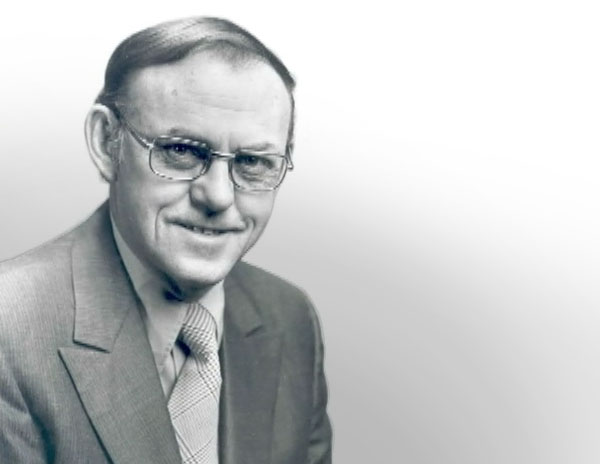<< Learning Center
Media Accessibility Information, Guidelines and Research
Malcolm J. Norwood
By Shane Feldman

Compared to the historical "fathers" of innumerable inventions who pushed for the mainstream acceptance of innovative devices, Malcolm J. Norwood (known affectionately as "Mac") stands out in the deaf and hard of hearing community as "the father of closed captioning." His is listed as one of the "great deaf Americans" in a book about the 77 greatest achievers in the community.
Born in Hartford, Connecticut, Norwood became deaf at the age of five from measles and scarlet fever. He attended public schools before enrolling at the American School for the Deaf (ASD), where he graduated in 1943 at 16 years old.
Norwood earned his bachelor's degree from Gallaudet College in 1949, and he subsequently became a teacher. He taught first at the Texas School for the Deaf for one year, then at ASD for two years, and later worked as a teacher, administrator, and coach at the West Virginia School for the Deaf and Blind (WVSDB). While at the WVSDB, he built up a large collection of filmstrips and regularly ordered foreign films for students. He passionately believed that children would benefit from watching and comprehending media.
Appetite for Captions
He first became involved in the Captioned Films for the Deaf program (now the Described and Captioned Media Program) in 1960 and eventually became its mainstay and leader, serving as chief from 1971 until his retirement in 1988. As the head of this organization, Norwood became a leading advocate for the development of closed captioning on television. Norwood's pioneering work on television and film captioning improved access to media for deaf and hard of hearing Americans. Although Emerson Romero preceded his experiment with captioned media, Norwood was responsible for popularizing the captioning technique.
Norwood is revered as a pioneer. He was the first deaf professional to work at the Department of Education and head a major program there. Norwood was at the forefront of almost every research and development program related to captioned media for the deaf. Most importantly, Norwood was the first to envision the possibilities of closed captioning on television. Norwood explored the possibility of captioning television programs at a time when hearing viewers rejected the prospect of embedding open captions on television networks: the solution was to produce closed captions—captions that could be turned on by people who want to view them.
Benefits of the Big "Mac"

His persistence during the 1970s and 1980s paid off with the creation of the captioning industry that we know today. Countless individuals have benefited from Mac's captioning, including members of the deaf and hard of hearing community, senior citizens, children, students, and adults leaning English as a second language.
Norwood retired in January 1988; he died on March 22, 1989. His contribution is summarized by Bill Stark, Project Director of the Described and Captioned Media Program: "Ralph Waldo Emerson said: 'Do not go where the path may lead; go instead where there is no path and leave a trail.' Mac cleared the way and left a body of work for captioning that will most likely never be equaled or duplicated."
Shane Feldman is the former editor of the NADmag, which is published by the National Association of the Deaf.
Tags:
Please take a moment to rate this Learning Center resource by answering three short questions.
